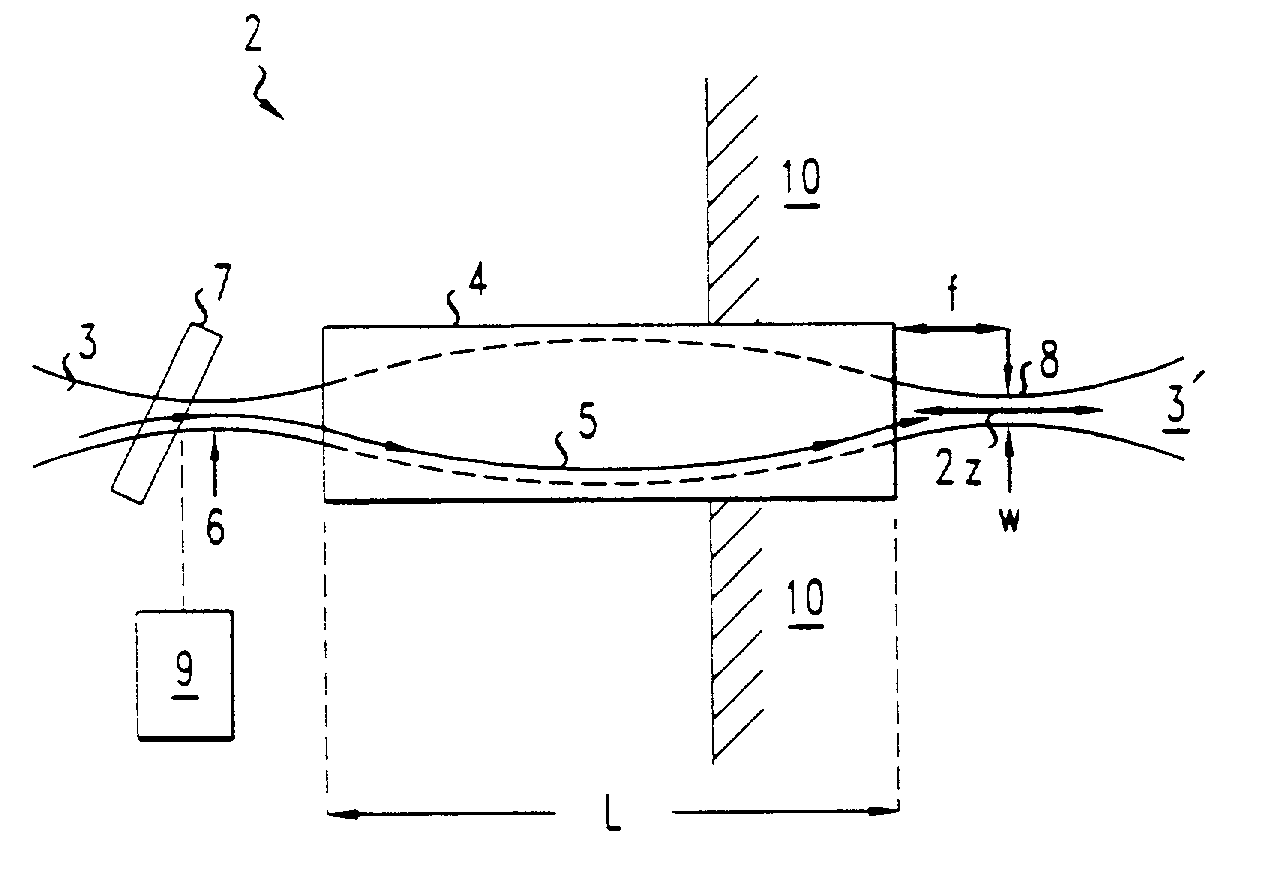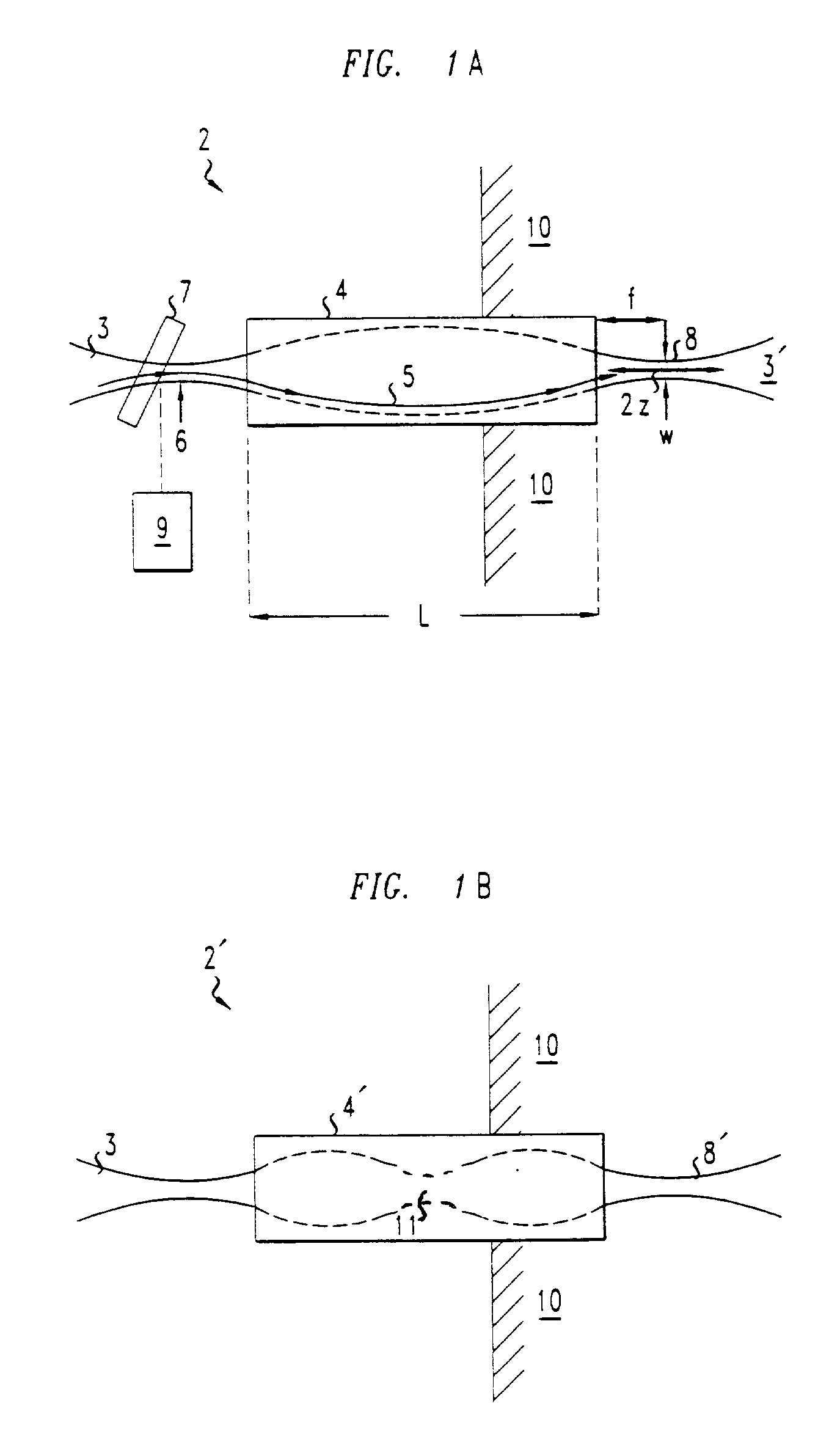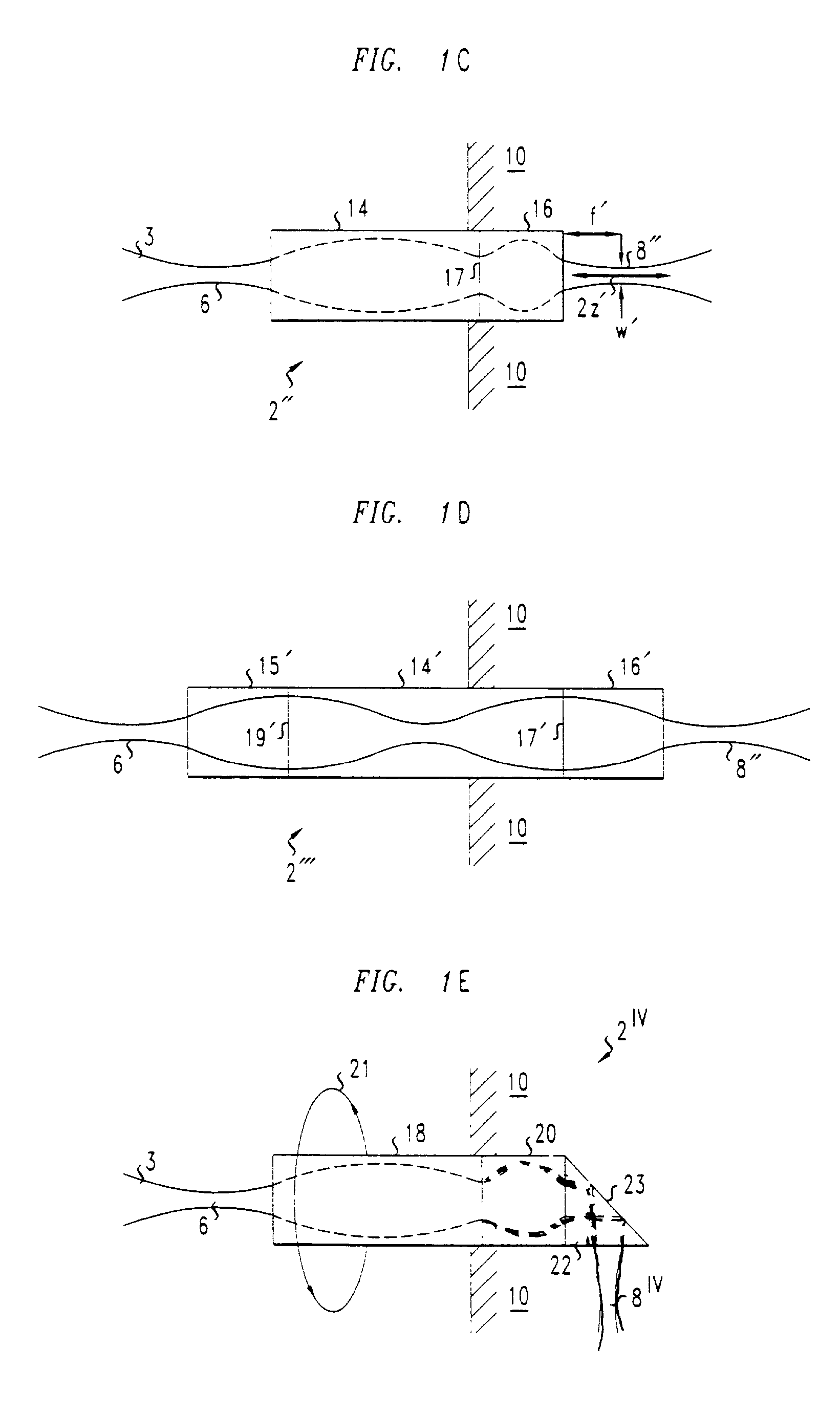Multi-photon endoscopy
a multi-photon, endoscope technology, applied in the direction of optical radiation measurement, instruments, catheters, etc., can solve the problems of non-linear optical processes that are usually not amenable to pre-compensation, the ability of pulses to be reduced, and the pulses of ultra-fast pulsed laser sources are susceptible to degradation
- Summary
- Abstract
- Description
- Claims
- Application Information
AI Technical Summary
Problems solved by technology
Method used
Image
Examples
Embodiment Construction
[0021] Various embodiments of include probes designed for insertion into a sample or body, i.e., endoscopic probes. The endoscopic probes transport light used to illuminate and scan the sample and collect light emitted by the sample. The emitted light is used to produce a scanned image of a portion of the sample.
[0022] FIG. 1A shows an endoscopic probe 2 that is based on a GRIN lens 4. The GRIN lens 4 delivers laser light pulses to the interior of sample 10. The laser light pulses provide illumination for producing scanned multi-photon images of the sample 10. The GRIN lens 4 has a cylindrical cross section and a radially graded refractive index profile. Exemplary GRIN lenses 4 include cylindrical lenses having diameters in the range of about 0.125 millimeters (mm) to about 3 mm and optical GRIN fibers.
[0023] The GRIN lens 4 has a refractive index profile whose radial variation bends light rays 5 propagating therein. Exemplary refractive index profiles have parabolic or hyperbolic s...
PUM
 Login to View More
Login to View More Abstract
Description
Claims
Application Information
 Login to View More
Login to View More - R&D
- Intellectual Property
- Life Sciences
- Materials
- Tech Scout
- Unparalleled Data Quality
- Higher Quality Content
- 60% Fewer Hallucinations
Browse by: Latest US Patents, China's latest patents, Technical Efficacy Thesaurus, Application Domain, Technology Topic, Popular Technical Reports.
© 2025 PatSnap. All rights reserved.Legal|Privacy policy|Modern Slavery Act Transparency Statement|Sitemap|About US| Contact US: help@patsnap.com



